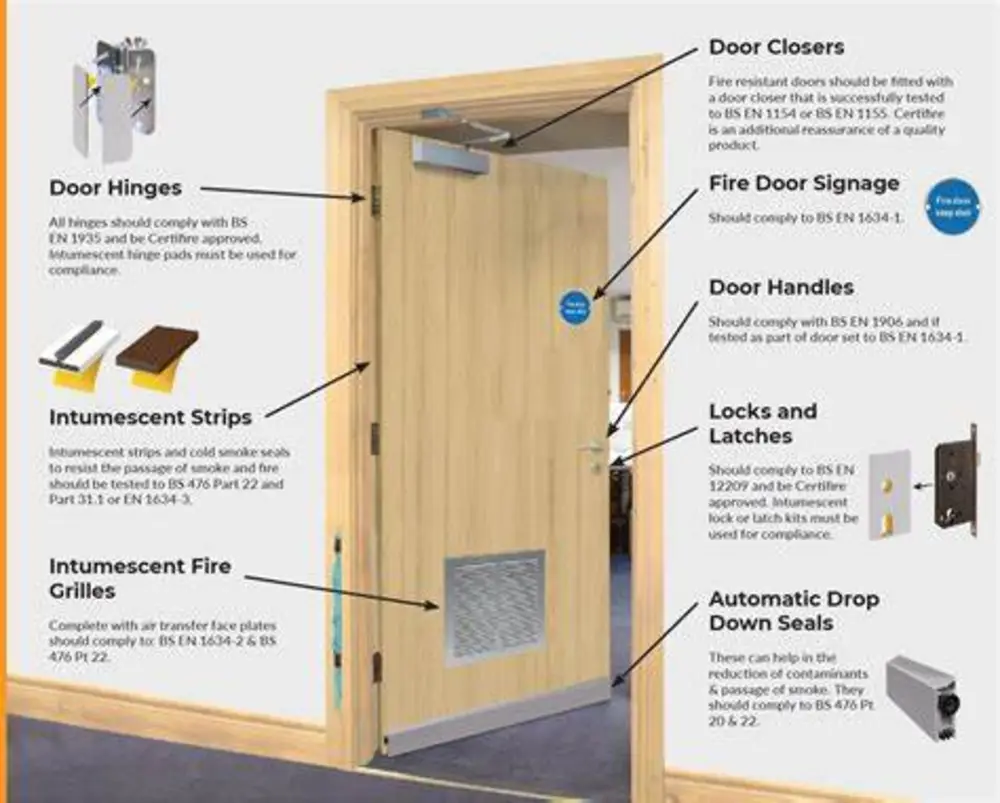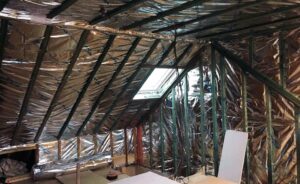
Fire safety is a non-negotiable element of modern architecture, whether in residential, commercial, or public buildings. Among the many fire safety features available, fire-resistant wooden doors stand out as both a functional and aesthetic solution. They offer a compelling blend of safety, style, and structural integrity. This guide explores what makes these doors essential, how they’re constructed, and what to look for when choosing or installing one—especially regarding wooden doors, fire-rated fasteners, and regulatory compliance.
What Are Fire-Resistant Wooden Doors?
Fire-resistant wooden doors, often referred to as fire-rated doors, are specially engineered to withstand fire for a specified period—typically 20, 30, 60, or 90 minutes. The purpose of these doors is not necessarily to prevent fire completely but to delay the spread of fire and smoke, allowing critical time for evacuation and fire suppression.
In contrast to regular wooden doors, fire-rated variants are constructed with core materials like solid wood, engineered board, or mineral-based infill. They may also include intumescent seals that expand under heat to block smoke and flames.
Key Features and Materials
1. Core Structure:
The internal composition of a fire-rated wooden door is essential to its overall effectiveness. Solid timber and mineral cores are most commonly used for high fire-resistance ratings. These materials can withstand extreme heat and prevent warping.
2. Intumescent Seals:
These seals are fitted around the edges of the door or frame. In the event of a fire, they expand several times their size, sealing the gaps to block out smoke and flames, which is crucial for life safety.
3. Certified Hardware and Fasteners:
Not only does the door material matter, but the fasteners and hardware—hinges, locks, handles, and door closers—must also be fire-rated and tested. Using standard screws or unapproved fasteners could compromise the entire assembly.
4. Surface Finishing:
Veneers and laminates used on fire-resistant wooden doors must be non-combustible or fire-retardant. Even the paints and adhesives must comply with fire safety standards.
Benefits of Fire-Resistant Wooden Doors
Life and Property Protection: By delaying the spread of fire, these doors provide more time for occupants to evacuate and reduce structural damage.
Compliance with Fire Codes: Most building codes now mandate the use of fire-resistant doors in certain areas, especially corridors, stairwells, and exits.
Aesthetic Flexibility: While being safe, modern wooden doors are also available in a wide range of finishes, making them easy to integrate into interior design.
Durability and Strength: Fire-resistant doors are generally more robust than standard ones, increasing their lifespan in busy environments.
Applications in Homes and Buildings
In residential settings, fire-resistant wooden doors are ideal for:
Garage entries (especially when attached to the house),
Kitchens, which are fire-prone areas, Basements or rooms with heating equipment. In commercial and public buildings, they are commonly used for:
Exit corridors and stairwells, Service rooms like electrical and boiler rooms, Partitioning spaces to create fire zones.
Installation Considerations
Installing a fire-resistant wooden door requires careful attention to detail to maintain its rating. Here’s what to consider:
Frame Compatibility: The frame must also be fire-rated, often made from steel or similarly treated timber.
Gap Tolerances: Ensure proper fitting—gaps around the door should be within the allowed limits (usually 3mm to 4mm).
Approved Fasteners: Use only manufacturer-approved fasteners and hardware. Substituting components may void fire certification.
Professional Installation: Fire-rated doors must be installed by certified professionals who understand regulatory requirements and best practices.
Maintenance and Inspections
Routine inspections are essential to maintain the integrity of fire-resistant wooden doors. Look for:
Damage to the core or veneer, Missing or damaged seals, Loose or missing fasteners,
Functionality of the self-closing mechanism.
Doors must be included in routine fire safety inspections and promptly fixed or substituted if found to be defective.
Choosing the Right Door: Practical Advice
When selecting a fire-resistant wooden door, verify the following:
Fire Rating Certification from an accredited body,
Material Specifications (core, surface, and seals),
Hardware Compliance including fire-rated fasteners,
Manufacturer Reputation and support for installation and maintenance.
Work with suppliers who can provide product documentation, compliance certificates, and guidance on integration with your building design.
Final Thoughts
Fire-resistant wooden doors are a critical investment in building safety that shouldn’t be overlooked. They combine the natural beauty of wood with modern fire protection technologies. When paired with the right fasteners, hardware, and professional installation, these doors significantly enhance the safety and compliance of any structure—residential or commercial.
Whether you’re retrofitting an older home or designing a new facility, choosing certified fire-rated wooden doors is a smart and proactive choice in today’s safety-conscious world.
Article by: pvc board surabaya






